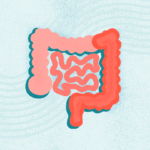As mentioned, TB breaks down into two main types: pulmonary (in the lungs) and extrapulmonary (outside the lungs).
The most common type is pulmonary. Extrapulmonary breaks down into several subtypes based on where in the body TB spreads.
TB typically starts in the lungs, but it can travel through the body to different organs and tissues. When this occurs, you may experience symptoms depending on where the bacteria takes hold.
Subtypes of extrapulmonary TB and their symptoms are explained below.
TB Meningitis
TB meningitis occurs when TB causes inflammation in the lining of your brain. About 1 to 6 percent of cases of extrapulmonary TB cause meningitis.
Symptoms associated with this type of TB can start with:
- Fatigue
- Low-grade fever
- Personality changes
- Minor headaches
- Generally feeling unwell
As it progresses, it can cause:
- Persistent headache
- Nausea and vomiting
- Loss of appetite
- Aches and pains
- Lethargy
- Confusion
- Seizures
- Coma
- Death (if untreated)
Skeletal TB
TB can spread to the bones.
Pott’s disease is the most common type of TB to affect the bones. Like other forms of extrapulmonary TB, it starts in the lungs before moving on to the spine.
Symptoms can include:
- Weakness in the arms and legs
- Back pain
- Loss of appetite
- Neck pain
- Unexplained weight loss.
- Fever
Addison’s Disease
Though uncommon in developed countries now because of advances in treatments, TB can directly affect the adrenal gland, causing it to produce too little of the hormone cortisol and sometimes too little of the hormone aldosterone.
In early stages, Addison’s disease can cause symptoms such as:
- Fatigue
- Sweating due to low sugar levels
- Muscle cramps and weakness
- Vomiting, diarrhea, or upset stomach
- Fainting or dizziness
- Pain in your abdomen
- Weight loss due to reduced hunger
- Loss of body hair
- Salt cravings
- Depression
- Irritable mood
- Lower sex drive (typically in women)
If any of these symptoms worsen, such as loss of consciousness or severe pain, you should seek emergency services for treatment.
Liver TB
When TB affects the liver, it can cause liver inflammation known as hepatitis.
Symptoms of hepatitis can include:
- Fatigue
- Diarrhea
- Nausea
- Loss of appetite
- Pain on the upper right side of your belly
- Weakness or general discomfort
- Jaundice (yellowing of the skin and eyes)
TB Lymphadenitis
TB can affect your lymph nodes, causing swelling.
It often affects the lymph nodes in your neck causing a condition known as scrofula. Only about 5 percent of TB cases involve scrofula.
In addition to swelling in your neck, you may also develop:
- Unintentional weight loss
- Fatigue
- Fever
- Night sweats
Cutaneous TB
Cutaneous TB is a rare form of extrapulmonary TB, accounting for about 1.5 to 3 percent of all extrapulmonary cases worldwide.
Cutaneous TB can cause various lesions to appear on the skin. These can include:
- Ulcers
- Nodules
- Plaques
- Abscesses
- Papules
You may develop a combination of the different skin lesions.
TB Pericarditis
TB can spread to the two thin layers of tissue surrounding and supporting your heart known as the pericardium. TB accounts for about 1 to 2 percent of all pericarditis.
The most common symptom is sharp chest pain that can spread to other areas, such as the left shoulder or neck. It may also worsen with coughing, lying down, or taking a deep breath. Sitting up can often relieve the pain.
Other symptoms can include:
- Fever
- Sweating at night
- Tiredness
- Decrease in weight
- Coughing
- Shortness of breath
Abdominal TB
Abdominal TB affects the gastrointestinal tract, peritoneum (thin layer of tissue surrounding the abdomen), intra-abdominal lymph nodes, and abdominal organs. It accounts for about 6 to 13 percent of all extrapulmonary cases of TB worldwide.
Symptoms are often nonspecific (very general), which can lead to delayed diagnosis. Symptoms can include:
- Weight loss
- Fever
- Abdominal pain
- Bowel habit changes
Genitourinary TB
Genitourinary TB affects both men’s and women’s bladder, kidneys, ureters, and genitalia. It accounts for about 20 percent of all extrapulmonary TB cases.
Symptoms can vary based on the exact parts affected, but often include nonspecific symptoms that may mimic other conditions, like urinary tract infections. Some possible symptoms include:
- Painful urination
- Ulcers on the genitals
- Increased frequency of urination
You are not as likely to develop more common nonspecific symptoms of TB, such as fever, night sweats, or weight loss.
Miliary TB
Miliary TB is a type of pulmonary and extrapulmonary TB that occurs when the bacteria gets into the bloodstream and causes an infection in multiple parts of the body. This is most common in infants, children under 5, and people with severely weakened immune systems, but anyone can contract it.
It gets its name from a Latin word meaning “millet seeds” because of the small lesions that appear on the organs it affects. Symptoms generally start as nonspecific and can go on to include site-specific symptoms. Symptoms include:
- Fever
- General weakness
- Anorexia
- Weight loss
- Lack of energy
- Chest pain
- Trouble taking deep breaths
- Abdominal pain
- Nausea
- Vomiting
Read the full article here




